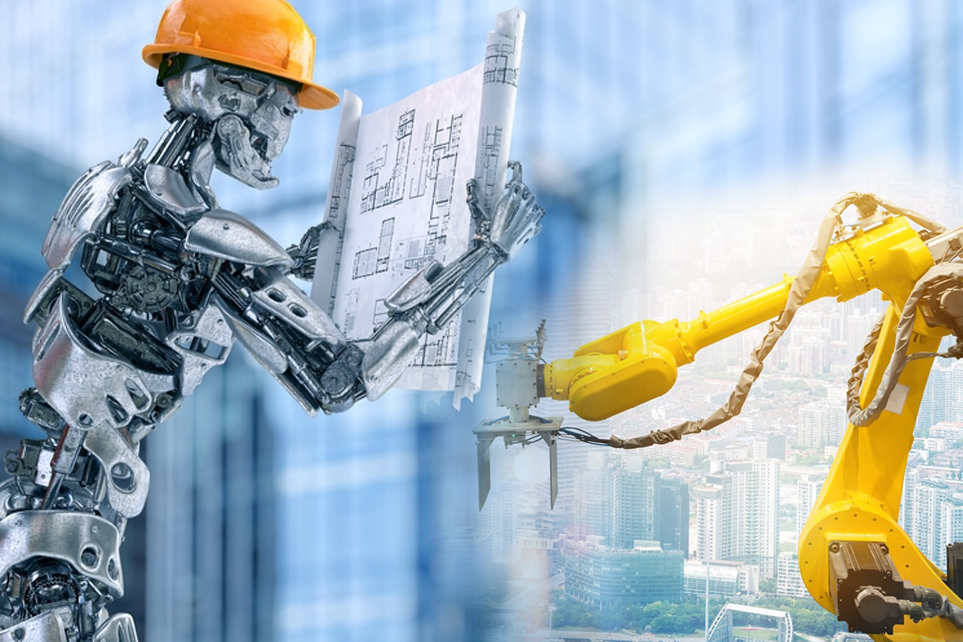Construction is one of the oldest professions as people have been building shelters and structures for millennia. However the industry has evolved quite a bit in the way they design, plan, and build structures. For decades, technology has been used in the construction industry to make jobs more efficient and construction projects and structures safer.
In recent years, construction companies have increasingly started using AI in a range of ways to make construction more efficient and innovative. From optimizing work schedules to improving workplace safety to keeping a secure watch on construction facilities, AI in the construction industry is already proving its value.
Let us take a look at how AI is impacting the Construction Industry
Project Planning and Management
In the recent past, an AI start-up launched and claimed that it’s AI and robots could solve major construction project problems, namely delays and being over budget. These robots can autonomously take 3D scans of project sites and feed the data to a deep neural network. The network then determines the progress of the different sub-projects. If it spots some issues, management can look into it and handle it before it becomes a bigger problem.
Future algorithms will use “reinforcement learning,” an AI technique that teaches algorithms through trial and error. It continuously assesses patterns, alternatives, and combinations based on similar projects. Because it continually improves itself and works on the best path, it can help in project planning.
Preventing Cost Overruns
Most large scale general contracting projects tend to go over budget, which is understandable. It can be challenging to focus on finances when project managers have to oversee everything and everyone. But they can now stay on top of handling the budget with artificial neural networks.
Based on a few factors like project size, the project manager’s competence level, and contract type, these networks can predict cost overruns. These predictive networks also use historical data, such as target start and end dates, to create realistic timelines for future projects.
In addition to that, the crew members also benefit from AI by remotely accessing realistic material for training to add to their knowledge and sharpen their skills. This positively affects project delivery as it cuts the time used to on-board new resources.
Generative Design
One of AI’s most outstanding contributions to construction is generative design, as it can explore, analyse, and evaluate many different model variations to figure out the best one. This method has already been used in manufacturing, but it is currently being integrated into construction.
Generative design is specifically useful to designers using BIM technology. With AI, designers would explore thousands of major and minor design modifications to create a more stable and safer design, which could even be cost effective and quicker to build. AI would cut this process down into mere hours, whereas humans doing this would take months.
Land Survey and Mapping
Mapping and surveying lands are taxing and time-consuming tasks. But with drones, Geospatial AI (GeoAI), and Geospatial Information Systems (GIS), the time required in executing these can be significantly reduced and can produce accurate survey maps and aerial images of the site.
Improved Onsite Safety
Workers are always at risk for accidents such as falling, electrocution, mishandling equipment, and also body stress injuries.
The responsibility of overseeing safety onsite falls on general contractors and project managers. With the help of AI & machine learning tools the general contractors can evaluate subcontractors based on a risk score. They can also prioritize urgent issues so the project manager can work with high-risk teams to solve and reduce any problems.
More than that, automation is making project sites safer than before. Management can literally keep track of workers with wearable sensors to determine their location and send alerts if they are in danger or have an accident.
Risk Reduction
Clients want a high quality of assurance that the project lifecycle would last a long time. But safety is not the only thing at risk on construction sites; there are also cost, time and quality risks.
So, general contractors can use AI solutions to monitor risks and prioritize those so that the project team can direct their limited time and resources on the most serious risk factors, which AI automatically sets as a priority.
Increased Onsite Productivity
Improved onsite productivity is the most significant benefit construction gets from AI. With automated machinery performing repetitive tasks, such as wall building, concrete pouring, and welding, construction will be more efficient than if humans were to do all those things.
Most of the work humans have to do is to program the system and maybe finishing and polishing work at the end. This significantly cuts down the overall time to complete a project and dramatically increases productivity.
Moreover, project managers can keep track of the entire project and its progress in real-time. Through AI, they can use technologies, like onsite cameras and facial recognition, to supervise and assess worker productivity and properly follow procedures.
Overcome Labour Shortage
Labour shortage is arguably the largest problem the construction industry is facing currently. Senior employees are retiring, but there is virtually no youth willing to take a career path in construction to replace them.
This situation is urging construction firms to turn to and invest in data science and AI. In fact, construction firms could boost productivity by 50% by analysing data in real-time, according to a recent McKinsey report.
Conclusion
Today, many construction companies are beginning to integrate AI and machine learning for better distribution of machinery and labour across jobs. It is a change that should be embraced and adopted. Take the first step and contact AppleTech to start your journey towards this change!

